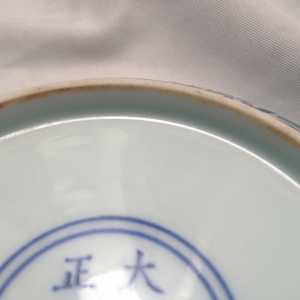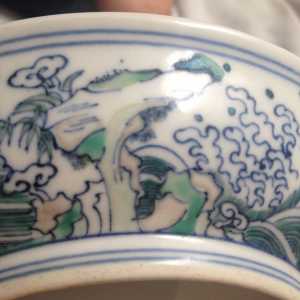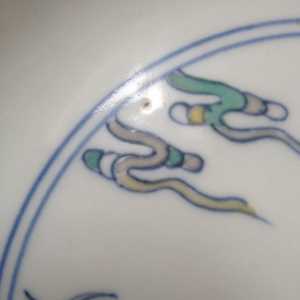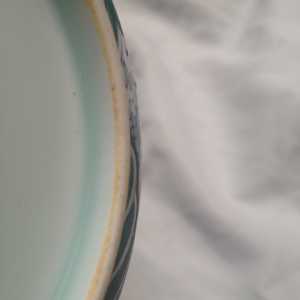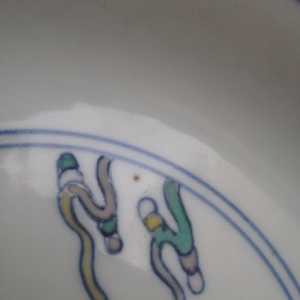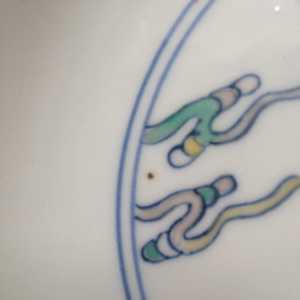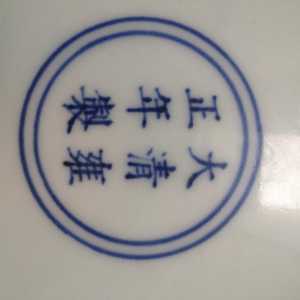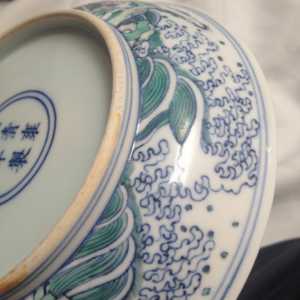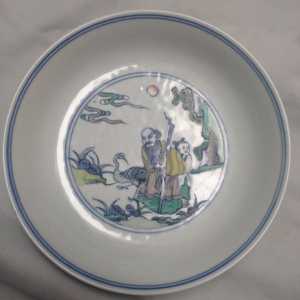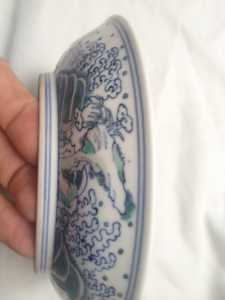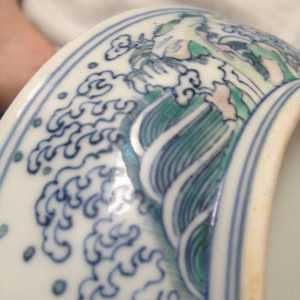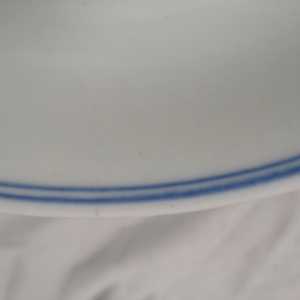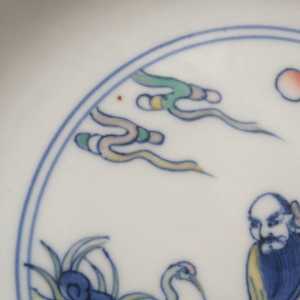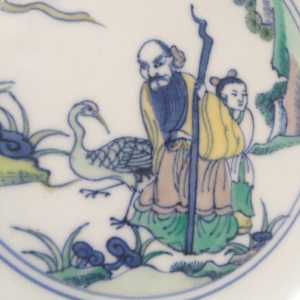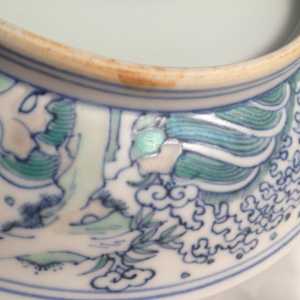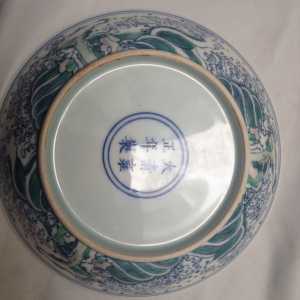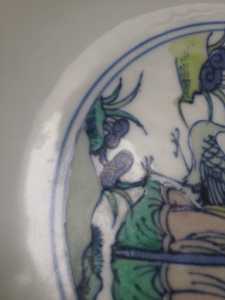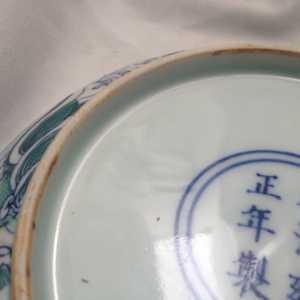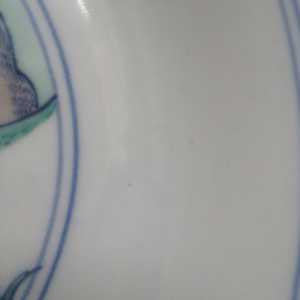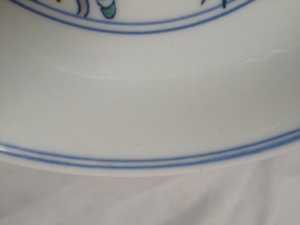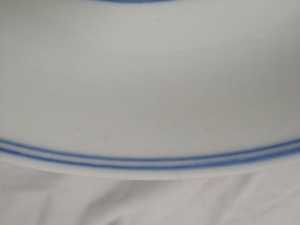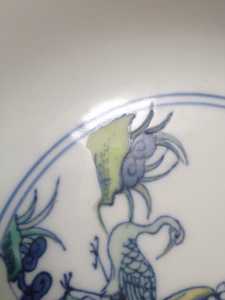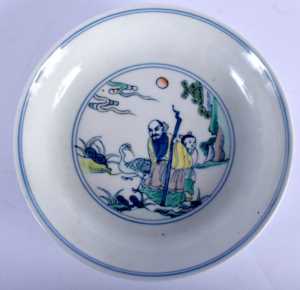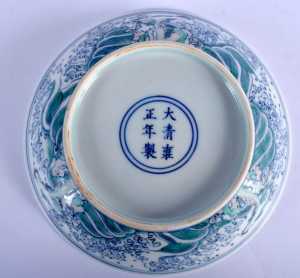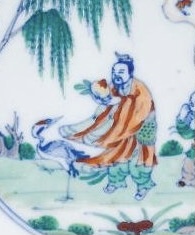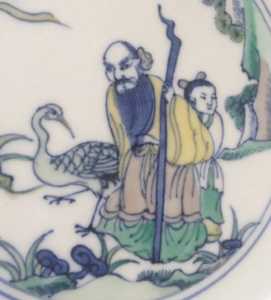The Chinese and Asian Art Forum. For Fans, Collectors and Dealers.
 Basic Rules For the BidAmount Asian Art Forum: Talk about whatever you want. You can even discuss and offer things that are for sale if they are authentic. Maximum image file size per post is 2 MB. Images of 700pxl x 700pxl are optimal if saved at a medium resolution. Be respectful of others and enjoy yourself. Click the YouTube link for a brief tutorial on using the forum. You can also EMBED Videos by cutting and pasting from You-Tube, Vimeo etc.
Basic Rules For the BidAmount Asian Art Forum: Talk about whatever you want. You can even discuss and offer things that are for sale if they are authentic. Maximum image file size per post is 2 MB. Images of 700pxl x 700pxl are optimal if saved at a medium resolution. Be respectful of others and enjoy yourself. Click the YouTube link for a brief tutorial on using the forum. You can also EMBED Videos by cutting and pasting from You-Tube, Vimeo etc.
NOTE: To post an item or add a new post, click open the category title from the FORUM LIST, and CLICK the Blue ADD TOPIC button.
Hello again,
I have this dish which wasn;t cheap, but also not expensive. I paid around £180 for it. I'm not expecting it to be original, but it does have a rust spot and some impurities that seem to be coming to the surface. I know nothing about doucai enamels, these seem quite matte. The greens are iridescent, which I read is how they should be. I am no expert so I was wondering if anyone has an opinion about when this dish could have been made? and what you think of it? There is an iron oxide ring around the foot in places, but I understand this can be simulated. How should the enamels be (should they be matte) and how can you tell an authentic rust spot? there is
one large one and some small black specs coming to the surface.
Hi Thomas, don’t judge by rust spots, judge by common sense. If this was old and as perfect as it looks, it would be an imperial piece and you would never get it for GBP180. On the other hand GBP180 are too much for a copy, at least in my opinion.
Birgit
@shinigami Thanks Birgit, The copies of these always go for £200 or more. They never seem to go for less, even if it states it is not of the period they always sell for a few hundred. I don't know why. I'm sure if I sold it tomorrow I would get my money back. All of the Doucai dishes, from the 18th century tend to be in very good condition. What I am really interested in is, when is it from? regardless of how much I paid for it. Last year sworders in the U.K. sold an imperial vase for near half a million pounds that was bought from a charity shop for £1. Does anyone know about rust spots, the enamels, are they supposed to be matte, iridescent? (greens only), how do you identify a fake rust spot. etc.. when is it from ? - republic, 19th 18th etc.. how do you know and what about the iron oxide? is it faked? how do you know.. Here's a link to the £1 imperial charity shop vase:
https://www.antiquestradegazette.com/news/2019/charity-shop-find-sold-for-380-000-at-sworders/
@thomasumjohnson You’ve asked a really complicated question regarding how to authenticate… it takes both knowledge of both physical characteristics of the porcelain, plus knowledge of appropriate design and mark.
Specific to your bowl bearing a Yongzheng Imperial mark….
The dish should not have any iron spots. Iron spots are appropriate in earlier ceramics (Ming and before) and non-imperial wares from almost all periods.
Yongzheng doucai is amazingly beautiful in both design and color… your piece lacks both unfortunately.
Google ‘Yongzheng doucai Christie’s’ and compare.
Final note…. Sale price, high or low, does not determine authenticity. In a small auction that is not online, if they have good stuff, you can really score some great buys! Vice versus, a large online auction might have bidders just looking to push the price up on an obvious fake.
Do as others do here in the forum… ask before bidding!
Good luck!
@greeno107 Thanks for the reply. What's the difference in style / painting ability with this one. I don't see it.
http://alaintruong.canalblog.com/archives/2019/12/08/37849318.html
Also Many doucai dishes selling at sotherbys etc have a rust spot or two.. how do you know if the rust spots are real - here's one:
again I'm not impressed with the painting style or composition. Is it real much more beautiful, I don't see it..
again you see rust spots on the first example as well, on the back..
@thomasumjohnson Let’s first start with the iron spot…
Qing wares, especially imperial and mark and period, are meant to be free of iron spots in the paste. The spots are imperfections, so in high quality Qing porcelains, the paste should be as pure white as humanly possible.
That doesn’t mean imperfections don’t occur, but this is NOT a way of demonstrating authenticity or age for Qing wares.
However, for the record you are comparing a rust spot on the front of your plate with the pitting on the bottom of a genuine Yongzheng M&P plate.
Yes, those dark areas are pits, not rust spots, that seem to occur mostly on the bottom of Kangxi and Yongzheng porcelains. Apples and oranges when it comes to assessing authenticity.
But forget all about the technical components of assessing authenticity and age. There is a much bigger issue.
You think your plate compares equally artistically (or is close) in both color and rendering as the examples of genuine Yongzheng doucai plates?
I’m willing to accept that much of art is subjective interpretation, BUT this is a bridge too far in the case of your plate.
Color wise, the glowing green and blues of genuine doucai make your plate look like a neon sign that is turned off… dim.
The delicate and carefully painted under glaze blue lines of the genuine doucai make your plate’s lines look like they were drawn with a magic marker.
Don’t confuse the simplicity of the overall doucai design with the complexity of how the rendering is executed. The genuine pieces are extremely fine… yours is not.
I think it is in your best interest to set aside learning rules for authentication, and spend more time looking closely at the artistry of known period pieces in museum collections and major auctions.
In the end, a piece that has all the signs of authenticity, but falls on its face with respect to its artistic merits, is worth very little to any serious collector.
@thomasumjohnson I’m putting your sage photo side by side with the sage from the genuine doucai plate. These look similar to you in execution, color, detail?
@greeno107 Thanks for the response. It looks like there are loads of 18th century doucai dishes with rust spots. I'm only trying to find out how to tell the difference between a genuine rust spot and a fake rust spot.. here are some examples on doucai dishes. If you search doucai dish on sotherbys or christies you will see a lot have rust spots.. how can you tell a real rust spot. Does anyone know?
https://www.christies.com/lot/lot-5624128
https://www.christies.com/lot/lot-5318284
Dear Thomas,
I told you a couple of times that you are barking a wrong tree, and Greeno too gave you an excellent adise: "I think it is in your best interest to set aside learning rules for authentication, and spend more time looking closely at the artistry of known period pieces in museum collections and major auctions."
But it seems that these are useless efforts, since you continue concentrating on absolutely irrelevant things like the "quality of rust spots".
There is nothing more to do, if you are convinced of being on the right path. Judging authenticity of doucai ware by the "quality" of rust spots is a sure way either for throwing out money or remaining at the very beginning of the path.
Regards,
Giovanni
The dish may be new, but I kind of like it and would like to hold it, depending on how much you paid, I really don't see it going down in value in the future reguardless of its actual age. JT
AN UNUSUAL DOUCAI OVOID JAR, 18TH CENTURY | Christie’s (christies.com)
Thanks for visiting "The BidAmount Asian Art Forum | Chinese Art"
If you sell on eBay, or have a shop feel free to post images and descriptions and links.
Check back often for discussion about the latest news in the Chinese art and antique world. Also find out about the latest Asian art auctions at Sotheby's, Christie's, Bonhams and Tajans.
Auction results for: fine porcelain, ceramics, bronze, jade, textiles and scholar's objects. As well as Japanese, Thai, Vietnamese and other Asian cultures.
Thank you,
Peter Combs
Topics and categories on The BidAmount Asian Art Forum | Chinese Art
Kangxi vases, Kangxi dishes and chargers, Kangxi ritual pieces, Kangxi scholar's objects, Qianlong famille rose, Qianlong enamels, Qianlong period paintings, Qianlong Emporer's court, Fine porcelain of the Yongzheng period. Chinese imperial art, Ming porcelain including Jiajing, Wanli, Xuande, Chenghua as well as Ming jades and bronzes.
The BidAmount Asian Art Forum | Chinese Art
A free Asian art discussion board and Asian art message board for dealers and collectors of art and antiques from China, Japan, Korea, Thailand, Cambodia, Vietnam and the rest of Asia. Linked to all of the BidAmount Asian art reference areas, with videos from plcombs Asian Art and Bidamount on YouTube. Sign up also for the weekly BidAmount newsletter and catalogs of active eBay listing of Chinese porcelain, bronze, jades, robes, and paintings.
The art of calligraphy - and for the ancient Chinese it certainly was an art - aimed to demonstrate superior control and skill using brush and ink. Calligraphy established itself as one of the major Chinese art forms during the Han dynasty (206 BCE - 220 CE), and for two millennia after, all educated men were expected to be proficient at it.
The Museum’s collections of Asian art span nearly five millennia and encompass the cultures of China, the Himalayas, India, Japan, Korea, and Southeast Asia. In 2007, the Museum launched an initiative to create dedicated galleries for the collection, beginning with a gallery for the arts of Korea ...
Chinese art is full of symbolism, in that artists typically seek to depict some aspect of a totality of which they are intuitively aware.
China Online Museum is the finest online museum of Chinese art. It features Chinese calligraphy, painting, ceramics, bronzes, carving, and other artworks.
Chinese Ceramics & Works of Art. Overview Upcoming auctions Contacts Auction results ... Christie’s sales of Chinese ceramics and works of art showcase centuries of Chinese history. Held throughout the year in London, New York, Paris and Hong Kong, they attract a wide audience of collectors and connoisseurs vying for pieces as diverse as ...
Explore Asian Art Week. Contact the Specialist Department. Chinese Paintings ... Senior Specialist, Head of Sale. [email protected]. Tel:+1 212 641 5760. Bid in-person or online for the upcoming auction:Fine Chinese Paintings on 10 September 2019 at New York. Bid in-person or online for the upcoming auction:Fine Chinese Paintings on 10 ...
Discover an abundance of must-see art from all corners of a vast continent at Christie’s NY Asian Art Week. From contemporary classical and Chinese paintings to works with exemplary provenance from the Art Institute of Chicago, our Rockefeller Paza galleries will be full of ancient treasures and contemporary masterworks in a salute to the vibrant arts of Asia.
Sold to benefit The Art Institute of Chicago’s Asian Art Acquisition Fund, the sale features 84 lots with a focus on Ming and Qing porcelains, and offers a rare insight into the taste for collecting Chinese ceramics and works of art in the Midwest from the end of the 19th century through the 1980s. Highlights include two Wanli wucai garlic-head vases, a Qianlong mark and period, blue and ...
Specialist, Chinese Paintings, Christie's London Dr Malcolm McNeill is a Specialist in Chinese Paintings at Christie’s, based in London. He previously worked as an assistant curator of the Chinese collections and the Victoria and Albert Museum in London, as a researcher at the British Museum, and as a translator and tour guide at the National Palace Museum in Taipei.
The Christie's Education 2020 Conference: The Chinese Art Market 18 Jun 2019 Christie’s Education is delighted to announce our first international academic conference in Asia which will take place in Hong Kong from 26-27 November 2020 at the Hong Kong Convention and Exhibition Centre and will run in parallel with Christie’s Hong Kong Autumn Auctions.
The summer Chinese Art sale in Hong Kong will feature works of art from several private collections, including Qing porcelains and textile from the collection of the legendary Chinese art dealer A. W. Bahr (1877–1959), fine gilt bronze Buddhist sculptures from an old Hong Kong collection, an East Asian collection of Qing dynasty wine cups and jades, and a Japanese collection of Song ceramics ...
Sotheby's Chinese Works of Art Department holds two auctions each year in London, New York, Hong Kong and Paris.
Chinese Art - View Auction details, bid, buy and collect the various artworks at Sothebys Art Auction House.
With more than 340 Chinese works of art dating from the Neolithic to the Republic periods, highlights of this sale include a selection of Qing Imperial monochromes from the collection of Arnold and Blema Steinberg, early ceramics from the Art Institute of Chicago and Chinese porcelain and works of art from the collection of Henry Arnhold.
Results: Sotheby's Asia Week achieved $52.4 million in six strong auctions, exceeding pre-sale estimates. With 76.5% of lots sold and 60.3% of lots surpassing high estimates, the Asian art sales at Sotheby's indicate continued collector interest in the finest works of art from China, India and and the Himalayas.
Today's sale of Important Chinese Art will proceed as planned with sessions at 10 AM and 2 PM EDT. Sotheby's will be monitoring the weather conditions throughout the day and will be available to coordinate alternative bidding options should conditions make it difficult for clients to attend the auction in person.
Bonhams Chinese Art department is renowned for offering the finest works of art representing the richness and breadth of China's artistic heritage, particularly Imperial porcelain, white and spinach green jades, cloisonné and Buddhist art. Specialised international auctions are held globally, including London, Hong Kong and San Francisco.
Bonhams : Chinese Works of Art We use cookies to remember choices you make on functionality and personal features to enhance your experience to our site. By continuing to use our site you consent to the use of cookies. Please refer to our privacy and cookie policies for more information.
Bonhams Fine Art Auctioneers & Valuers: auctioneers of art, pictures, collectables and motor cars. We use cookies to remember choices you make on functionality and personal features to enhance your experience to our site. By continuing to use our site you consent to the use of cookies. ... Chinese Art (US) General enquiries
Bonhams : Fine Chinese Art We use cookies to remember choices you make on functionality and personal features to enhance your experience to our site. By continuing to use our site you consent to the use of cookies. Please refer to our privacy and cookie policies for more information.
Bonhams Fine Art Auctioneers & Valuers: auctioneers of art, pictures, collectables and motor cars Bonhams : Asian Art We use cookies to remember choices you make on functionality and personal features to enhance your experience to our site.
Bonhams are international auctioneers of fine Chinese and Japanese art. We specialise in rare Imperial and Export Chinese ceramics and works of art, as well as Japanese ceramics, fine and decorative works of art from the Neolithic Period to the 20th century. View on map
Bonhams Fine Art Auctioneers & Valuers: auctioneers of art, pictures, collectables and motor cars. We use cookies to remember choices you make on functionality and personal features to enhance your experience to our site. By continuing to use our site you consent to the use of cookies. ... Asian Art Bonhams. Work. 22 Queen St.
